| Name: | SES: Salamis Naval Battle |
| QTH: | Salamina isl. |
| Country: | Greece |
| Grid: | KM17 |
| Web: | http://sv2rck.gr/SX480SNB/ |
| Email: | sy8bqq@hotmail.com |
| Hidden | |
| Hidden | |
| Hidden | |
| Greece | |
| ITU: | 28 |
| CQ: | 20 |
| IOTA: | EU-075 |
| Distr: | SALAMIS |

|

|

|

|

|

|

|
Salamis isl. Dx Radio Team presents the SES for the 2503 years anniversary of the Legendary Naval Battle of Salamina:
"Transmitting to the world the Battle that changed the World."
Special Event
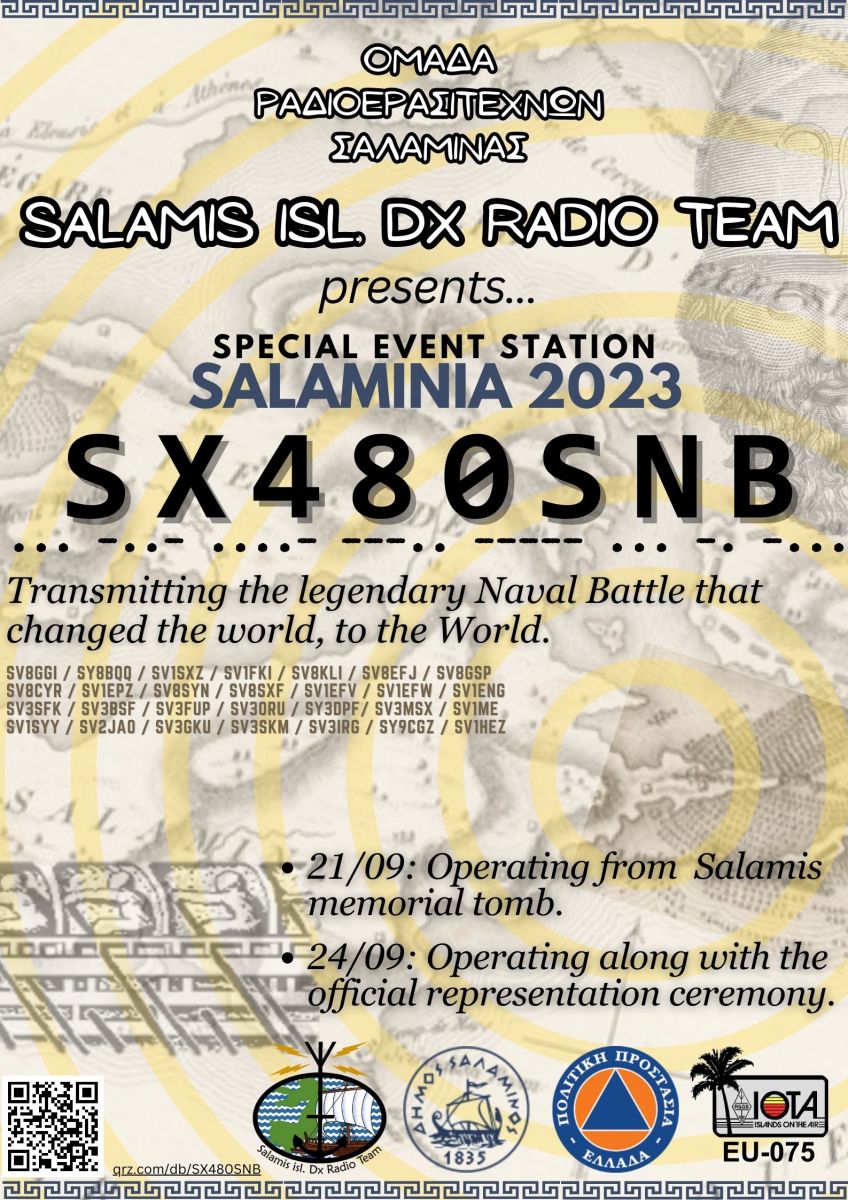 - Represenation: Operators from the island and around Greece.
- Represenation: Operators from the island and around Greece.
- Active dates: From 16 to 30 September 2023.
- Bands: 160m, 80m, 60m, 40m, 30m, 20m, 17m, 15m, 12m and 10m.
- Modes: CW, SSB, FT8, PSK, RTTY and more. There will be e-awards for the operators that contact this SES.
- Special Field Days: On the 21st & 24th of September, Salamis isl. Dx Radio Team will operate on the spot, alongside the "Salamínia 2023" ceremony's events (commemoration of the Salamis fighters at the burial monument and battle representation by the sea, respectively).

See also: The Municipality of Salamina website
The Chronicle
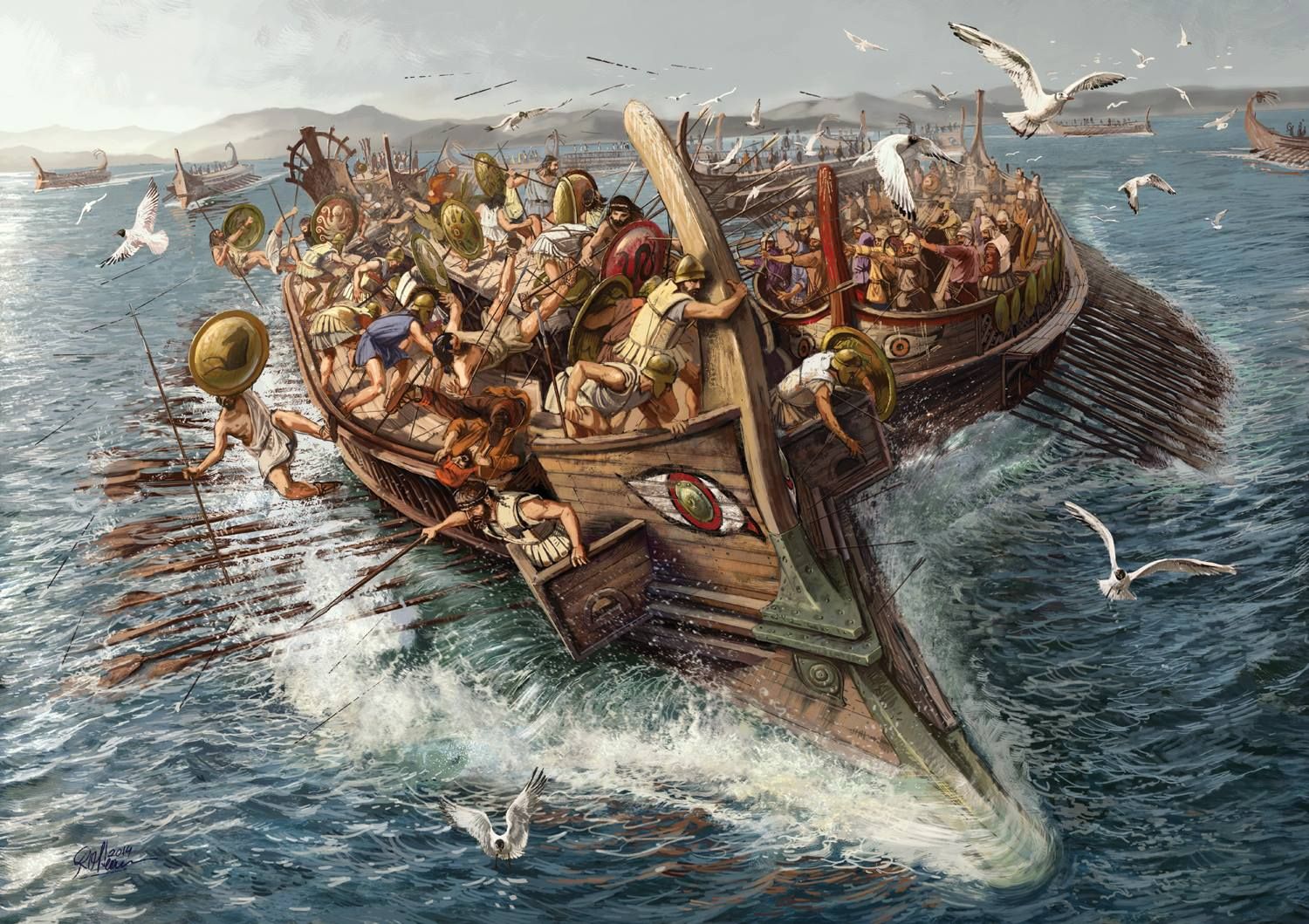 After the heroic battle in Thermopylae, Athens was the last resort to confront the Persian empire as it marched south. A legendary naval battle is said to have taken place on the 28th or 29th of September 480 B.C. in the straits between Salamis island and Psyttaleia islet, just west of Piraeus port. It was then, that this march came to a stop with a victory that points out to humanity the predominant constitution is democracy, rather than despotism.
After the heroic battle in Thermopylae, Athens was the last resort to confront the Persian empire as it marched south. A legendary naval battle is said to have taken place on the 28th or 29th of September 480 B.C. in the straits between Salamis island and Psyttaleia islet, just west of Piraeus port. It was then, that this march came to a stop with a victory that points out to humanity the predominant constitution is democracy, rather than despotism.
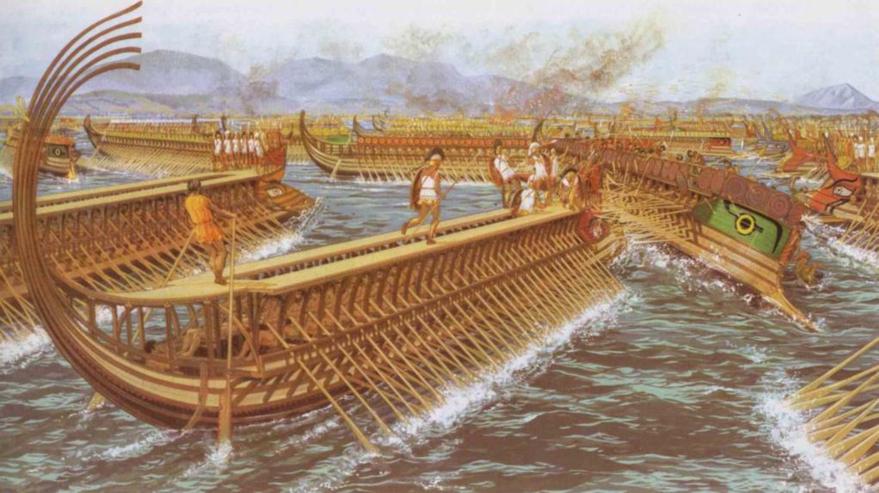
The writings say that 1207 Persian and 378 Greek warships gathered near Salamis island, in order to give one of the most decisive naval battles of ancient times, leaving its mark forever in history. Thanks to intelligence superiority and admiral Themistocles’ plan to lure and then surprise attack the Persian fleet at the break of dawn, the swift Greek trieremes managed to sink about 200 Persian ships, thus causing great confusion and discouragement in Xerxes’ fleet.
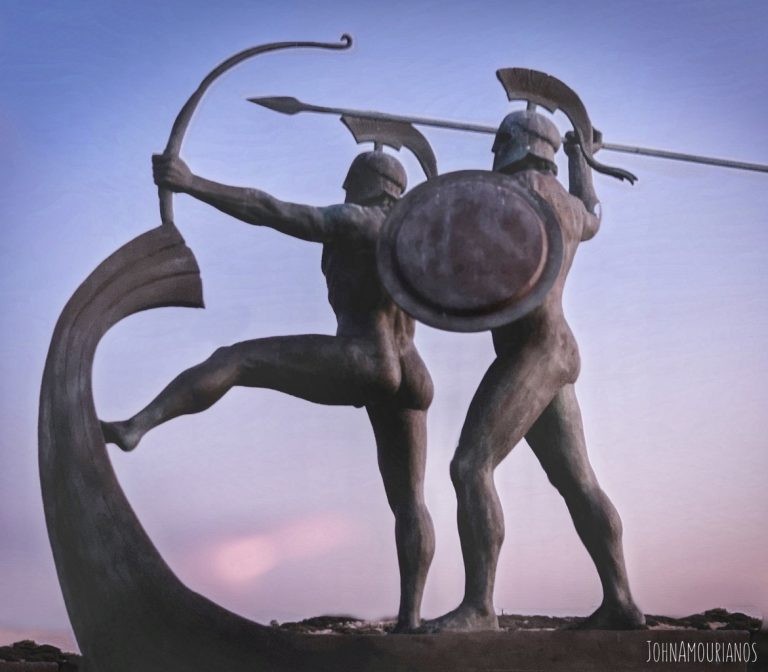
In commemoration of the Greek sailors and soldiers who fought, a tomb was built at a hill on the coast of Salamis where the battle took place, in order to honor the men who freely sacrificed their lives in favor of their freedom.
A Tour in the Island's History in 3'
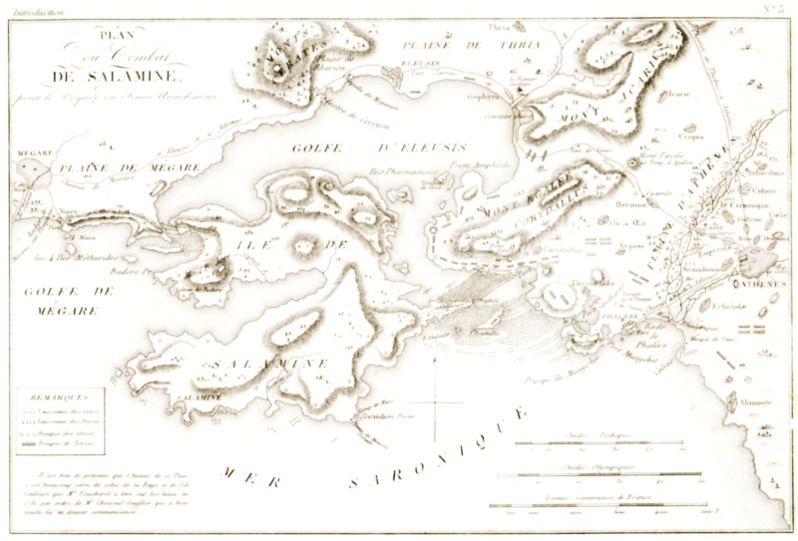
Being Attica's closest island and the largest in the Saronic Gulf and EU-075 IOTA Group, with an extent of 93,5 sq. km, and a coastline of about 100 km, Salamina hosts a population of 39.283 inhabitants (2011 census), the vast majority of whom in the city of Salamina (Koúlouri). Due to the island’s geographical location and historical circumstances, its course in time was usually common or intertwined with that of Athens.
The earliest human evidence in Salamina dates back to the Late Neolithic period, around the third quarter of the 6th millennium BC. The most important mythological figure of the island is king Ajax (Aias), who participated in the Trojan War. Plenty of settlement and burial remains from the Late Bronze Age (ca. 1600-1100 BC) are scattered in several locations, such as the Mycenaean settlement in Kanákia, probably the seat of the island's kingdom. Around the middle of the 6th century BC, while in the Archaic era, Salamina was annexed to Athens, after the conflict with Megara. For the next six centuries, the urban center was located in Ampelákia bay, where today one may find ruins of buildings, fortifications and port facilities.
During the Persian invasion (480-479 BC), Salamina became a refuge for the civilian population of Attica, seat of the Athenian Republic and base of the Greek fleet. At the end of September 480 BC, the legendary all-day naval battle -considered to be the decisive conflict that put an end to the Persian expansion, thus safeguarding democracy and Western civilization as we know it- took place in the straits between Salamina and the Attica coast. The Classical era (479-323 BC) was a period of prosperity for the island. Among the architectural remains of the time, one may discern the recently restored circular burial monument in Kolónes, dating back to the 4th century BC. In the Hellenistic period (323-30 BC), the island was conquered by Macedonians and pirates. There are indications that the island was looted and destroyed by the Roman general Sulla in 86 BC. Under the Roman rule, the few inhabitants that were left behind, moved to settlements around today's city and in Aiántio.
One of the most famous sights associated with ancient Salamina is the so-called “Euripídes cave”. It is located near Peristéria, in the southern part of the island. Numerous finds, proving that the cave was used from the end of the 6th millennium BC until the Middle Ages, are exhibited in the Archaeological Museum of Salamina. Cross-examination of ancient literary testimonies, led to the conclusion that this is probably the place where the great tragic poet of the 5th century BC, Euripídes, retired to write his works.
SES is inactive.
You have to be logged in or user does not allow showing this data.